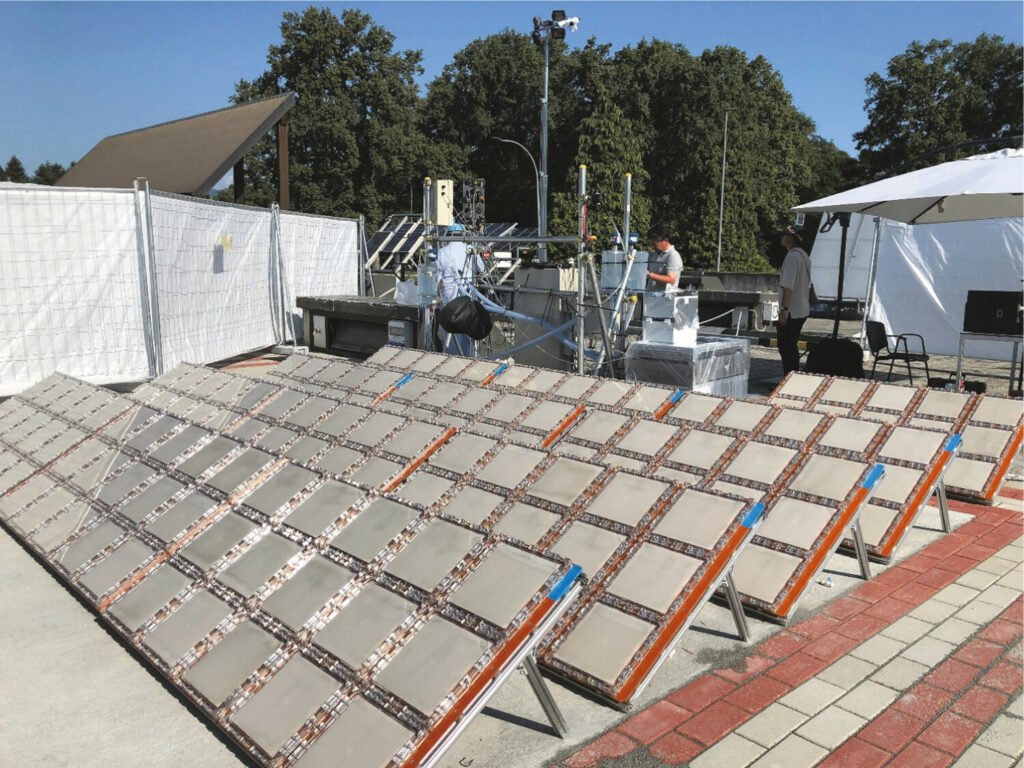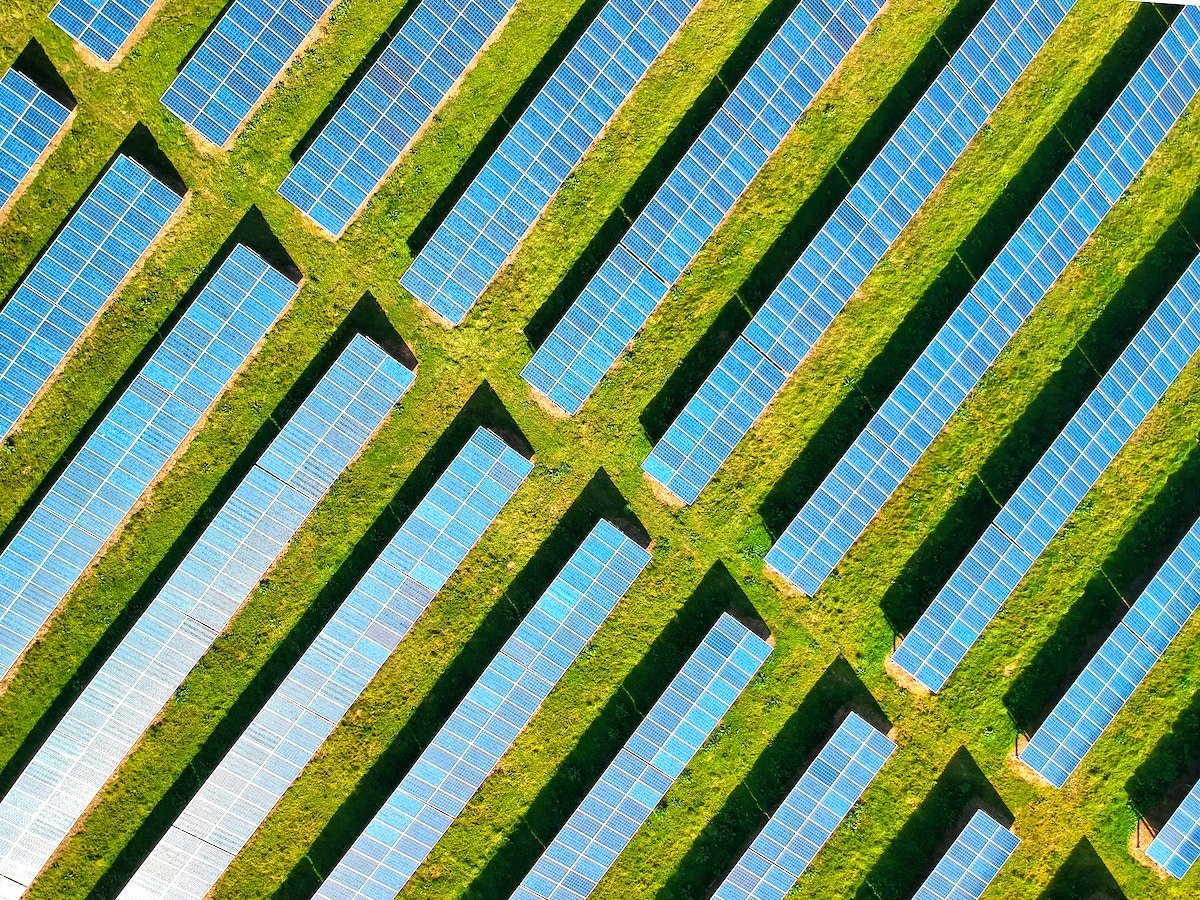In groundbreaking new research towards sustainable energy solutions, scientists have successfully mimicked the natural process of photosynthesis to produce methane, a potent and energy-dense fuel, from carbon dioxide (CO2), water, and sunlight.
This innovative approach, reported in ACS Engineering Au, not only presents a prototype system that could replace nonrenewable fossil fuels but also offers a glimpse into the future of renewable energy technologies.
What is Artificial Photosynthesis?
Plants have long mastered the art of utilizing sunlight to power photosynthesis, converting CO2 and water into oxygen and sugars, which they use as fuel. On the other hand, humans have been exploring ways to tap into this abundant and sustainable energy source provided by the sun, with solar panels being one of the most popular methods.
The team, led by Kazunari Domen, has taken this further by developing a system that uses sunlight to split water into hydrogen and oxygen gas. The objective was to evolve this process to more closely mimic photosynthesis, absorbing CO2 and storing the sun’s energy in methane while utilizing cost-effective and scalable materials.
The researchers crafted a set of reaction cells akin to solar panels, each coated with an aluminum-doped strontium titanate (SrTiO3) photocatalyst to facilitate the reaction. These cells, filled with water and exposed to sunlight, split the water into hydrogen and oxygen gas. The hydrogen gas was then purified and introduced into a second chamber, where it reacted with CO2, forming methane and water. The water was then recycled back into the first step with the photoreactor.
Based on a previously designed 100 m2-scale photocatalytic solar hydrogen production mini-plant, this new apparatus has demonstrated the continuous production of filtered hydrogen gas over several months.
The team attached a catalytic CO2 methanator to convert photogenerated H2 into CH4, successfully operating and accumulating photosynthetic methane (CH4). The experiment explored various versions of the apparatus, each tailored for specific experimental purposes and sizes of composing assemblies. Notably, one version was utilized in the 2022 European Innovation Council (EIC) Horizon Prize on Artificial Photosynthesis “Fuel from the Sun” competition, showcasing its practical applicability and potential impact in the field of sustainable energy.


In a practical application of this technology, a 130-square-foot array of these cells, approximately the size of a small bedroom, operated continuously for three days under various weather conditions. While the results are promising, the team acknowledges that the efficiency of artificial photosynthesis systems needs to be enhanced before these devices can be considered viable options for large-scale power generation.
The journey towards scaling up the plant size for broader applications as artificial photosynthetic plants are challenging. The team’s paper discusses potential hurdles and solutions in transitioning from a mini-plant to a full-scale industrial application of the artificial photosynthetic apparatus, providing a realistic perspective on the practical implementation of this technology.
While the apparatus utilizes sunlight to produce methane, a potent greenhouse gas, it is imperative to manage methane storage, utilization, and potential leakage to ensure that the technology does not inadvertently contribute to greenhouse gas emissions. The research opens up a dialogue about the environmental impact and sustainability of utilizing methane as a clean energy source, prompting further exploration and development in managing and mitigating potential environmental effects.
SAving the Planet Requires Nuance
Artificial photosynthesis and solar panels harness the sun’s power, but both offer distinct advantages and cater to different energy needs, carving their unique niches in renewable energy technologies. Artificial photosynthesis, with its ability to store energy in chemical bonds, such as methane, offers on-demand energy utilization. It presents a versatile solution by providing chemicals that can be utilized as fuels or raw materials in various industries. Furthermore, it stands out in its capacity to use and mitigate atmospheric carbon dioxide, offering a pathway to carbon-neutral fuel production and addressing concerns related to greenhouse gas emissions. However, artificial photosynthesis is still in its developmental stages, with researchers exploring avenues to enhance its efficiency, scalability, and cost-effectiveness, which might initially be on the higher end due to the complexity of the technology.
On the other hand, solar panels, a mature and widely implemented technology, have been significantly optimized in terms of cost and efficiency over the years, making them one of the most accessible and cost-effective renewable energy technologies available today. While they excel in directly converting sunlight into electricity, their application is primarily confined to electrical use cases, and they do not offer direct solutions for carbon capture or the production of chemical fuels. Additionally, the storage and use of the generated electricity often require additional systems, such as batteries, and may depend on grid infrastructure for distribution.
Overall, the two systems, among others like wind and hydro power, and other green energy technologies, will work hand in hand to aid in reducing fossil fuel consumption.
Is Artificial Photosynthesis A Source of Clean Energy?
Methane is a greenhouse gas but a highly energy-dense fuel and the primary component of natural gas. Traditional fossil fuels, including natural gas, take millions of years to form, and extracting them can have detrimental environmental impacts. Therefore, developing methods to produce methane from renewable energy sources could gradually diminish the need for nonrenewable fossil fuels. The researchers believe that this proof-of-concept system could be adapted to assist in producing precursors for plastics or other chemical feedstocks and be scaled up to generate larger quantities of sustainable biofuels.
The endeavor to mimic plant power through artificial photosynthesis opens up many possibilities for sustainable energy production. The ability to harness sunlight to produce methane offers a pathway to reducing our reliance on nonrenewable fossil fuels and moving towards more sustainable, environmentally friendly energy solutions.
However, the journey doesn’t end here. The efficiency and scalability of these artificial photosynthesis systems need to be further explored and optimized to make them feasible for large-scale implementation. Overall, the exploration of artificial photosynthesis signifies a step towards innovative energy solutions and presents an opportunity to delve deeper into understanding and replicating the natural processes that have sustained life on Earth for eons. As we progress, the convergence of science, technology, and sustainability is poised to play a pivotal role in shaping our energy future.
MJ Banias is a journalist and podcaster who covers security and technology. He is the host of The Debrief Weekly Report and Cloak & Dagger | An OSINT Podcast. Follow him on Twitter @mjbanias.

